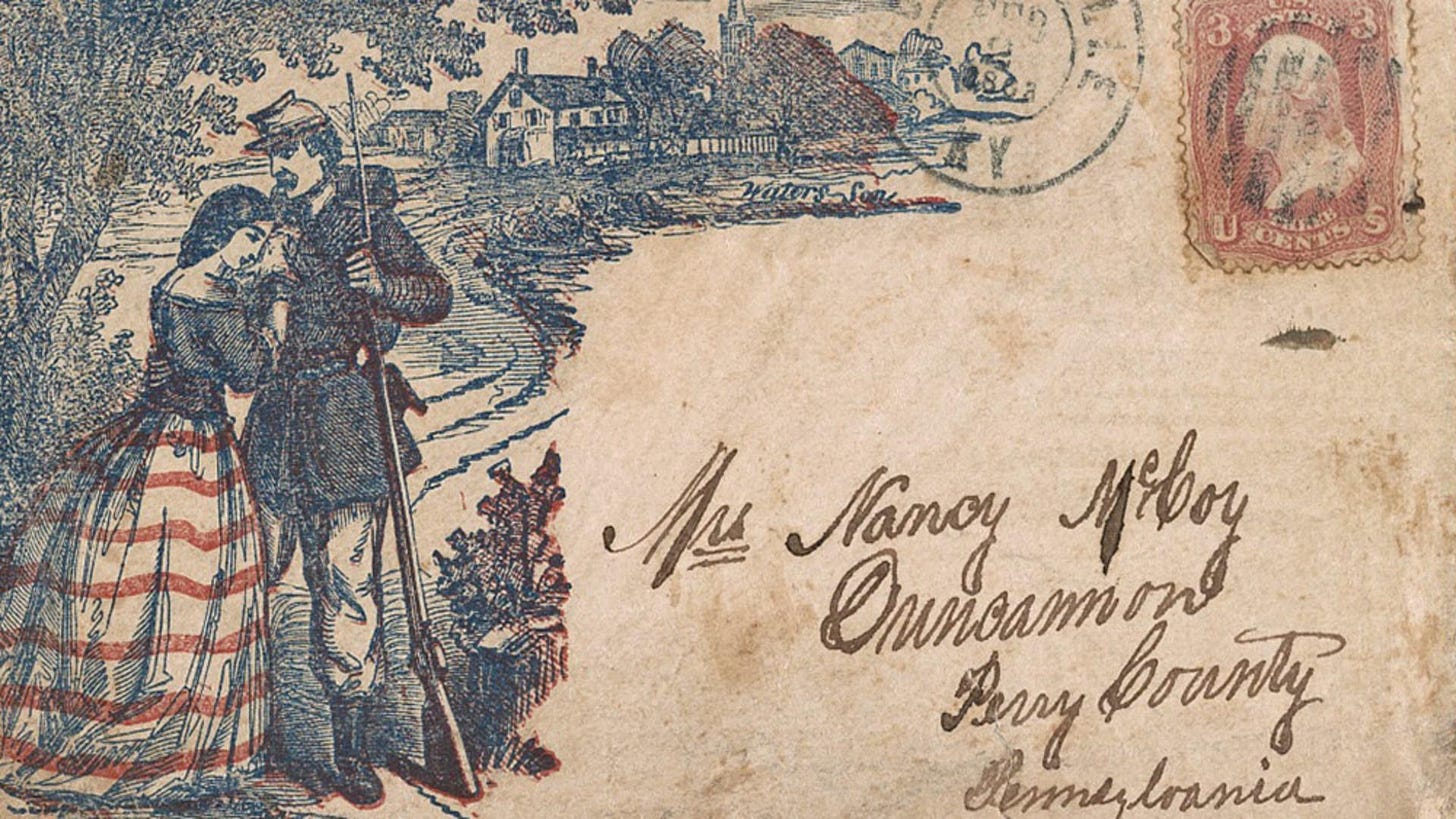Latest Op-Ed: Our local NPR affiliate here in Boston asked me to expand on my recent blog post on the passing of historian David McCullough.
It’s not a stretch to suggest that you could spend the rest of your life reading the letters of Civil War soldiers and not make a significant dent into the total number. I’ve been re-reading parts of Christopher Hager’s book, I Remain Yours: Common Lives in Civil War Soldiers, which focuses in on the culture of letter writing among the rank and file who lacked a formal education.
Hager speculates as to the total number of letters written during the war in the introduction:
Part of what makes the Civil War such a remarkable moment in American history is indeed that ‘so many people were so articulate.’ The personal letters that millions of Civil War soldiers and their families wrote to each other between 1861 and 1865 number somewhere close to half a billion. Although it is impossible to be precise, all available estimates point to the same order of magnitude. A Northerner relief worker recorded the volume of mail into and out of Union army camps as averaging 180,000 letters per day. Multiplied out for four years of war, that translates into well over 250 million—for the North alone. A New York chaplain tallied 3,855 letters he mailed for his regiment in the single month of April 1863. If his regiment was typical, it suggests soldiers in the Army of the Potomac alone, about one-sixth of federal forces, produced a million outbound letters per month. There is no reliable way to calculate the number of letters soldiers received from civilians, but it would be nearly as large. Any reasonable calculation yields a figure of several hundred million, in a country that had a population slightly over thirty million people and a literacy rate, though among the highest in the world at the time, markedly lower than it is today. (p. 4)
Many of these men took pen to paper for the first time while serving their respective countries as a means to remain present among their loved ones and to maintain family cohesion.
Historians have made great use of these letters in what has become a small cottage industry of scholarly studies about the lives of Civil War soldiers. Many of these books pluck out passages from diaries and letters as a way of providing answers to questions about soldier motivation, religion, slavery, and emancipation. I’ve learned a great deal about every aspect of soldiering as a result, but the search for the common soldier or experience often obscures individual experience over time.
There is still nothing better than reading through a collection of letters that track a soldier’s experience over time. It’s a reminder that the war was experienced on an individual level.
Here are two of my favorites, one Union and one Confederate.
Jennifer W. Ford ed., The Hour of Our Nation’s Agony: T/he Civil War Letters of Lt. William Cowper Nelson of Mississippi (University of Tennessee Press, 2007).
Richard L. Kiper ed., Dear Catherine, Dear Taylor: The Civil War Letters of a Union Soldier and His Wife (University Press of Kansas, 2002).
What about you? Share your favorite archival or published collection of a Civil War soldier’s letters in the comments below. Thanks.





Robert Hunt Rhodes, ed., All For The Union: The Civil War Diary and Letters of Elisha Hunt Rhodes (New York: Vintage Civil War Library, 1992).
I read this book after hearing excerpts featured in Ken Burns' Civil War documentary series and thought it provided great insight into a Union soldier moving up the ranks while serving in the Army of the Potomac.
Karen Stokes, ed., An Everlasting Circle: Letters of the Haskell Family of Abbeville, South Carolina, 1861-1865 (Macon: Mercer University Press, 2019)
I read these letters a year or so ago and they're interesting in general, but the central storyline is watching one of the sons enter the war ambitious and optimistic, and then see his transformation into an emotionless machine. He has several letters to his mother where he is processing grief and trauma that are just bone-chilling to read.